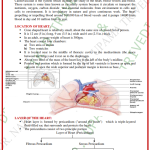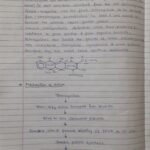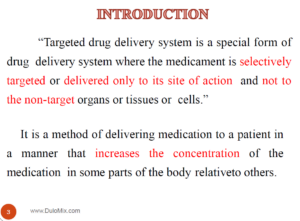SCALE UP AND POST APPROVAL
CHANGES (SUPAC)
Submitted by: Gaurav
(M.pharma pharmaceutics)
Jamia hamdard
Submitted to:- Dr.Sanjula Baboota & Dr.Javed Ali
CONTENT
1. Introduction
2. What is SUPAC
3. History and background
4. SUPAC documents
5. Requirements for post approval changes
6. Comparability protocols
7. Post marketing surveillance
INTRODUCTION
Technology transfer of a pharmaceutical product
from research to the production with
simultaneous increase in production output is
commonly known as scale up.
Generic drug approval started from approval of
ANDA (abbreviated new drug application)
The manufacturer may change.
Drug formulation, batch size, process, equipment, manufacturing site
Identity, strength, quality, purity and potency
WHAT IS SUPAC
The scale up and the change made after approval
in the composition manufacturing process
manufacturing equipment and change of site
have become known as scale up and post
approval change
HISTORY AND BACKGROUND
On november 21,1997 the food and drug
administration modernization act (FDAMA) was
signed into law.
The FDAMA initiative was directed at providing more
definite language to the current food and cosmatic
act.
FDAMA added section 506A (21U.S.c 365a) to the
FD&C act, which provided specific language for
manufacturing changes to an approved application
and reporting requirement for those changes.
FDAMA PROVIDED FOR FOUR REPORTING
CATEGORIES:
1. Prior approval changes: Major changes that
require FDA approval before implementation
2. Supplement changes being effected(30 days):
Moderate changes that require 30 day’s notice before
implementation
3. Supplement changes being effected (0 days):
Moderate changes that can be implemented
immediately
4. Annual report: Minor changes that can be
implemented immediately and filed in the next
periodic report.
SUPAC DOCUMENTS
List of document issued by FDA for help applicant
with post approval changes.
Documents are divided into IR(immediate release),
MR(modified release), SS (non sterile semisolid
dosage form like cream, ointment and etc)
Various types are changes are required
a) Components and compositions of drug product
b) Manufacturing equipment
c) Batch size
d) Manufacturing site change
LEVEL OF CHANGES DESCRIBE BY FDA
REQUIREMENTS FOR POST APPROVAL
CHANGES
Components and composition of drug product
In general, mainly focus on change in ingredents in
drug products. Change in adding or deleting an
excipent are describe in level 3. Adding or
deleting of ingredients must be filled as prioe
approval supplement. The exception to this
applied to colours, which can be removed or
reduce from formulation and filled in an annual
report
Change in batch size
Change in batch size from pivotal/pilot scale bio
batch to larger or smaller production batches
tends to change the operating parameter.
Therefore, all the parameters, such as mixing
time, speed, etc., are adjusted according to the
equipment (large or small) used in the process.
Bellow 100,000
dosage unit are not
covered by this
guidance
MANUFACTURING EQUIPMENT CHANGE
Any change in manufacturing equipment other than that used
in the approved application requires appropriate validation
studies to demonstrate that the new equipment is similar to
the original equipment. Equipment should be same design and
operating principal according to SUPAC IR
Example:
Change in V-blender from one manufacturer to another
manufacturer would not represent a change in operating
principle, and hence be considered to be the same under
SUPAC-IR, whereas a change in equipment from one class (V-
blender) to a different class (ribbon blender) would be
considered a change in design and operating principle and
would be considered different under SUPAC-IR.
MANUFACTURING SITE CHANGE
The sponsor of an ANDA must include in its
application the site of manufacture, where the
drug product will be produced, tested, packaged,
or labelled. A change in any of these sites can
adversely affect the identity, strength,
quality, purity, or potency of the finished
product. Therefore, any site change under
SUPAC-IR calls for the new site to be in
compliance with good manufacturing practice
(cGMP) regulations.
COMPARABILITY PROTOCOLS
According to the guidance, “A comparability
protocol is well defined, detailed, written plan for
assessing the effect of specific cmc changes in the
identity, strength, quality, purity and potency of
a specific drug product as these factors relate to
the safety and effectiveness of the product.
POST MARKETING SURVEILLANCE
• Once the FDA approves a generic drug product,
manufacturers are responsible for conducting
post-marketing surveillance.
• Post-marketing reporting requirements for an
approved ANDA are set forth in the US Federal
Code of Regulations.
• Post-marketing report in requirements for an
approved ANDA are set forth in the US Federal
Code of Regulations, 21 CFR 314.80 (5) and
314.98
“According to 21 CFR 314.80(a), an adverse
drug experience is de¢ned as ‘‘any adverse
event associated with the use of a drug in
human, whether or not considered drug
related”
REFERENCE
1. Shargel.L, Kanfer.I, Generic drug product
development (solid dosage form), Scale up, post-
approval changes and post-marketing
surveillance page no.281










